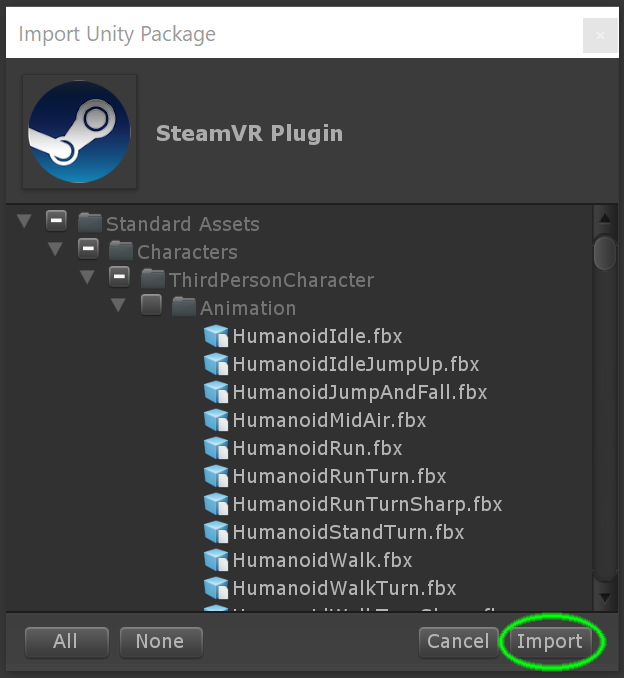Steam VR setup Tutorial #1 - Player camera setup
Aims
The aim of this tutorial is to get you started using Unity and HTC VIVE HDM (Head Mounted Display) Using Steam VR 2.2 plugin.
Please notice that this is the first of a series of tutorials focused on enabling the use of HTC VIVE devices, each tutorial will build on top of previous ones to get you from basic concepts to more functional and complex proyects.
### Prerequisites-
Download and install Unity 2018.2.21f1.
More resent versions might also work, this tutorial was made using Unity 2018.2.21f1
-
Create a Unity personal account.
In order to use Unity you will have to create our own personal account as it will ask you to login when you start running the software.
- Download and install Steam. Steam platform will install aditional components needed to run the HTC VIVE on your computer. Click here to go to the Steam download page.
Getting started
Create a new Unity project, you might need to login first. Make sure you select a 3D template.

After your new project opens, locate your mouse coursor on top of the "Hierarchy" panel and right click to create a plane.


Now let's place the plane in the middle of the space. Select the plane and chose the Reset option inside the drop-down menu found on the right top corner of the transform component. This will reset all the transform values for the plane.

Now, let's make bigger so your player can have a bit more of space to interact. With your plane selected, look for the Transform component in the "Inspector" panel and change the scale to 10 on all three axis.

Now that we have a plane for our player to stand on, it is time to import the Steam VR Plugin from the asset store, this plugin will allow us to integrate and use both the VR Headset and the controllers. Click on the "Asset Store" tab and type "Steam VR" into the search box.

First you will need to click the "Download" button, after downloading, the same button will turn into the "Implort" button, click on it, you should see a window displaying all the contents of the package, just clic Import.

After a moment, your package should be installed and you will be able to see the "steamVR" folder in your Project panel.

We are almost ready to place our player in the scene, however, first we need to delete the Main Camera (Included by default in our new project) as will conflict with our player's camera. Please notice that in most cases you will only need one camera inside of your project and having more than one usually requires extra settings in order for them to work properly. Please right click over your Main Camera gameobject and select "delete".

Now we are ready to place our Player prefab. You can locate it either by lookin for it inside of the steamVR folder (see paht below) or just typing "Player" into the search box found on top of the Project panel.

After dragging and dropping your player into your "Hierachy" panel, hold the "alt" key and click on the little arrow next to the prefab name, this will unforld/display all the child objects contained inside the player gameObject.

We are not going to review these elements in this tutorial, however, it is important for you to notice that they include both controllers and the VR camera.
We are almos done, now you need to setup your HTC VIVE, run Steam VR and press play.

You will get a message asking you to generate the actions for the Steam VR Input, this file is the one that Unity uses to read the imput from the controllers and the headset in order to generate actions in your project, for now, you just need to click "yes".

Next you will see a new window listing the defaul action sets, just press the button that says "Save and generate".

Now you are ready to test it, press the Play button again, now you will be able to look inside of your new scene. You shoul be able to see both controllers following the movements of your hands and reacting to your interation with the buttons.

